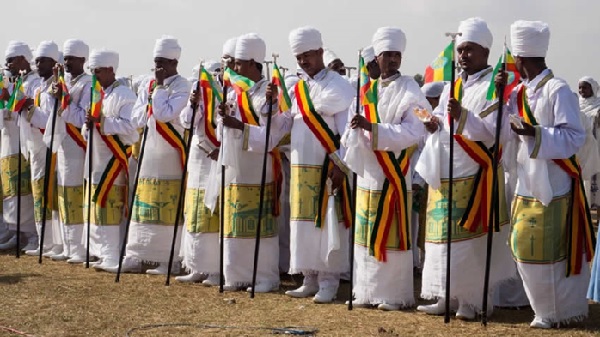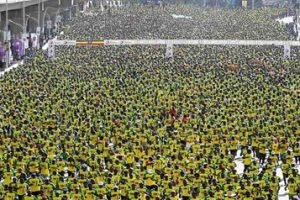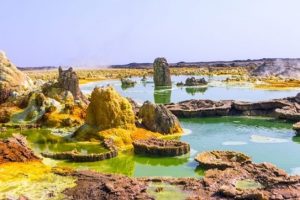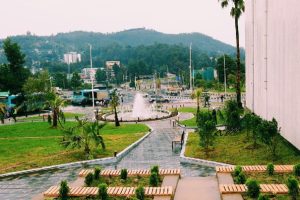
BY KFLEEYESUS ABEBE
Ethiopia is the largest country as it ranks 27th in terms of size (1,126,829 square kilometres) and 12th in terms of population currenly having morethan 120 millions of people. It has also contrasting landscape, multitude of cultures and unique history.
The country has also been selected as World’s Best Tourism Destination and favorite cultural destination for 2015 by The European Council for Tourism and Trade (ECTT), based in Romania. The varieties of its attractions and other reasons, therefore, made Ethiopia an irresistible destination to tourists and compelled them to stay longer in Ethiopia. Blogger and adventurer Nellie in her website https://www.wildjunket.com wrote her fascination and the reason why tourists must visit Ethiopia.
“One thing for sure, Ethiopia is truly unique culturally, historically and scenically. I have traveled to 20 countries in Africa and can safely say this country is unlike any other on the continent. Ethiopia is mountanious country and boasts highlands rather than the vast savannas that are associated with Africa. Plus, this country is so diverese that any Ethiopia itinerary will pack in myriad of experiences, from hiking adventures and visits to tribal villages to history lessons at ancient sites.”
Given the multitudinous of tourist sites in Ethiopia, Nellie recommend tourists to have at least three weeks to get the glimpse of Ethiopia. “I would recommend a minimum of three weeks to travel to Ethiopia, and even longer if possible. Ethiopia is a truly spectacular country, every region has its own star attraction.” She also indicated traveling to Ethiopia has become easy in recent years due to the new visa system. Citizens of all nationalities can get an Ethiopia e-visa online.
In anytime or season Ethiopia is worth to be visited; but there are times you could get the best of it in a short time and unexpensive budget. As for travel blog ‘Travel Media,’ the dry season which runs from October through February could be the best time to visit Ethiopia. But it has put expections. ”There are exceptions to this rule, however—especially if you’re interested in experiencing Ethiopia’s cultural festivals, some of which are held during the rainy season. If you’re on a budget, traveling during the low season is also a good way to save money.”
The article outlined the climatic condition of tourist sites that would be suiting if visited this time. “Although Ethiopia’s climate varies greatly depending on the region you are planning on visiting, the wet season generally lasts from June to September, with light rains beginning as early as March. June and July are the wettest months, particularly in the Northern Highlands. Weather wise, therefore, the best time to travel is from October to February, when the climate is both dry and sunny. At this time of year, night time temperatures can drop dramatically, so it is important to pack plenty of layers.”
Danakil Depression, Omo Valley, Simien Mountains and Northern Highlands are the places Travel media listed best to be visited at this time. It has also provided what preparation visitors should make – what to wear, what to do and the amount of payments. In line with visiting natural sites, the blog also indicated festivals and events tourists would enjoy them at that particular time.
The dry season, from October to February, is the best time to plan a trip to the ancient rock-cut churches of Ethiopia’s stunning Northern Highlands. However, even during the wet season, rains rarely last all day. If you are looking to save money, consider booking a trip in March or April, when the rains are light and prices for accommodation and tours are generally lower. Usually, it is best to avoid traveling in June and July, when the rains in this region are at their most extreme.
The Simien Mountains are a vast mountain range whose highest peak stands at 14,901 feet, making it one of the highest mountains in Africa. Trekking here is fantastic, not only because of the scenery, gorges, and streams but also because you get a chance to look at endemic wildlife like the Gelada Baboons and the Walia Ibex. The best time to trek is from September to November, when it is dry, green, and relatively dust-free. October, in particular, can be spectacular because this is when the mountain wildflowers are in full bloom.
With more than 50 tribes living in the Omo River region of southwestern Ethiopia, it is a fascinating destination for those interested in African culture. The remote location, which is barely accessible by four-wheel drive, means that traditional customs and beliefs are very much intact for most of these tribes. This region has two rainy seasons, with one lasting from March to June, and a shorter one in November. Access is often impossible during these times, so planning your trip for the dry season is essential.
Danakil is one of the hottest places on earth, with daytime temperatures easily reaching 122 degrees Fahrenheit. It is a fascinating destination where you can witness the age-old tradition of salt caravans, experience Afar culture, and marvel at a myriad of active volcanoes. If you have ever felt the urge to visit another planet, you’ll love the extraordinary landscapes of this region. To avoid feeling like you are boiling alive, however, make sure to visit during the cooler months of November to March.
Ethiopian festivals are certainly worth planning a trip around. Mostly religious festivals generally last several days. Orthodox Tewahido Christian festivals are the most prominent and visible in Ethiopia and are celebrated according to the Ethiopian calendar. For example, Ethiopian Christmas (known as Genna) is celebrated on January 7, rather than December 25. Timket, the Feast of Epiphany- commemoration of the Baptism of Jesus Christ by John the Baptist in the River Jordan- held on January 19.
Timket is Ethiopia’s biggest festival. The festival lasts for three days, and includes a procession of the church’s Tabot, or consecrated replica of the Arc of the Covenant; and ritual re-enactments of the baptism. When the more solemn aspects of the festival are over, participants enjoy feasting, music, and dancing. The best places to enjoy the festival are Gondar, Lalibela, and Addis Ababa. Attending the UNESCO registered Timket festival helps to open opportunities to get connected with locals maybe than anytime of the year.
All in all, tourists can see many things in this season without weather challenges or budget concerns. As many tourists flock to the country they could also make fellow tourists as tour partner or friends. It is also convinent for transportation but accommodation should be done in advance as the number of tourists takes high in some places.
The Ethiopian Herald December 2/2022





